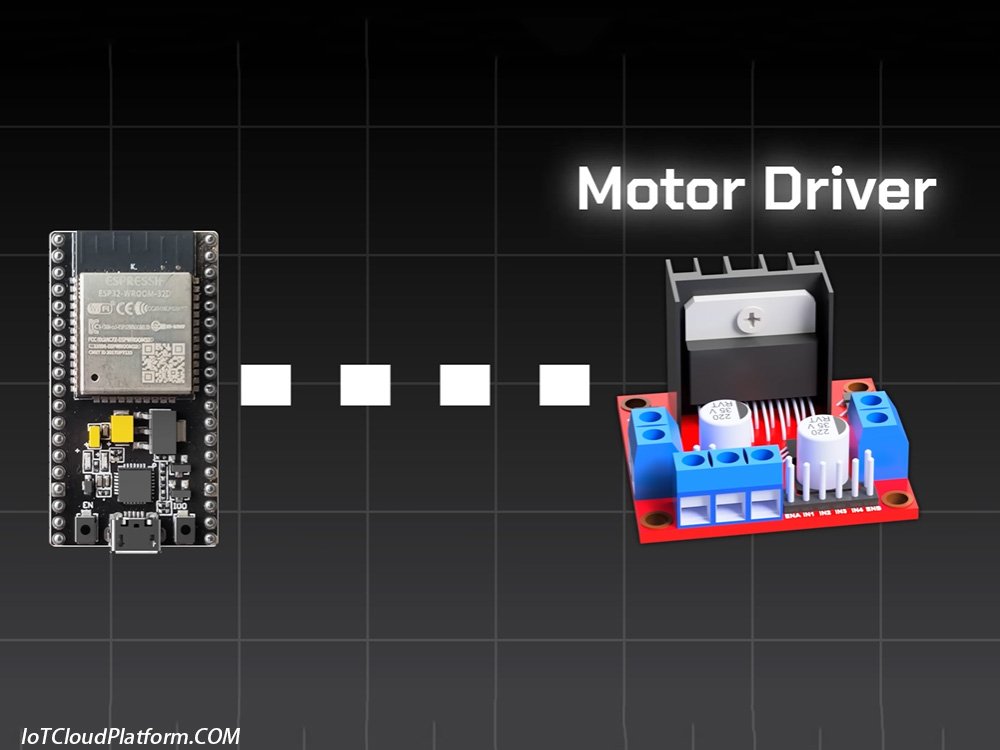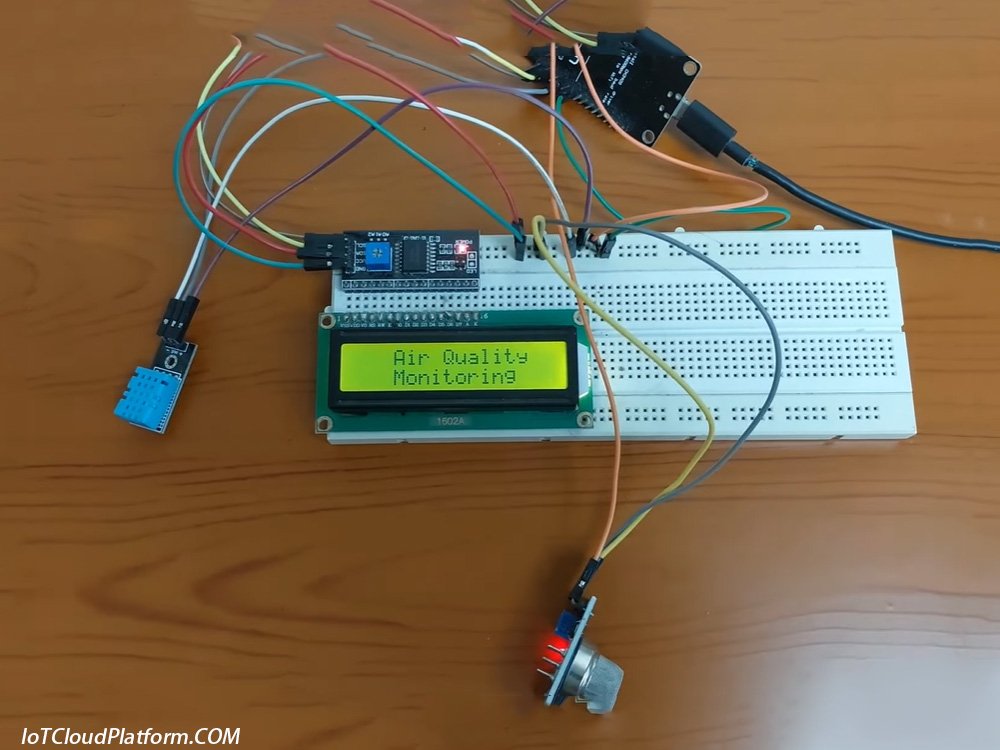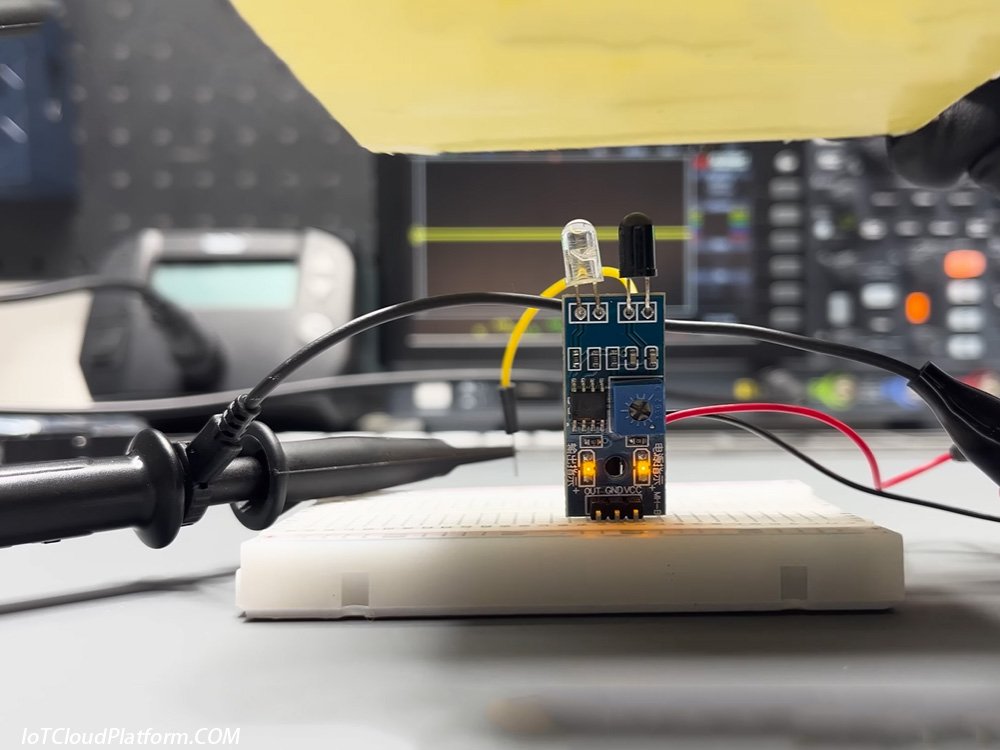
Indoor Air Quality Monitoring System Based on ESP32
The indoor air quality monitoring system based on ESP32 is a comprehensive system that integrates modern sensor technology, microcontroller technology and IoT communication technology, aiming to provide users with real-time and accurate indoor air quality information.
The following is a detailed introduction to the system, which will cover the detailed analysis of system composition, working principle, functional characteristics, software design, hardware connection and configuration, data visualization and analysis, etc.

How to Monitor Air Quality
System composition
The indoor air quality monitoring system based on ESP32 mainly consists of the following parts:
1. ESP32 microcontroller:
As the core processing unit of the system, ESP32 is a high-performance, low-power system-on-chip (SoC) with integrated Wi-Fi and dual-mode Bluetooth functions. It has high processing power and rich peripheral interfaces such as ADC, DAC, SPI, I2C, UART, etc., and can connect to a variety of sensors and perform complex tasks.
2. Particle sensor:
It is used to detect the concentration of particulate matter in the air, such as PM1.0, PM2.5, PM4.0 and PM10. Common particle sensors include SDS011 and Sensirion SPS30. SDS011 is highly accurate and low-cost, while SPS30 can provide more comprehensive particle concentration data.
3. Gas sensor:
used to detect harmful gas concentrations in indoor air, such as CO2, TVOC (total volatile organic compounds), etc. These sensors can monitor CO2 and other chemicals exhaled by the human body to estimate the CO2 level in the indoor environment, while detecting the concentration of organic compounds from furniture, building materials, detergents, etc.
4. Temperature and humidity sensor:
Used to measure indoor temperature and relative humidity, providing important parameters for air quality assessment. Common temperature and humidity sensors include BME280, etc.
5. TFT display:
Used to display air quality monitoring data in real time, including particle concentration, harmful gas concentration, temperature and humidity, etc. The TFT display has the characteristics of bright colors and high clarity, and can provide a good user experience.
6. Power module:
Provide a stable power supply for the system. It can be powered by a lithium-ion battery or a 5V DC power supply, and the low-power design of the system needs to be considered to extend the battery life.

Indoor Air Quality Monitoring System Based on ESP32
Working principle
The working principle of the indoor air quality monitoring system based on ESP32 is as follows:
1. Sensor data acquisition:
The particle sensor, gas sensor and temperature and humidity sensor collect the particle concentration, harmful gas concentration and temperature and humidity data in the air respectively.
2. Data processing and transmission:
The ESP32 microcontroller receives the data collected by the sensor and processes and analyzes it. Then, the data is transmitted to the cloud server or local display device via Wi-Fi or Bluetooth.
3. Data visualization and analysis:
Users can access the cloud server or local display device through terminal devices such as smartphones and computers to view real-time air quality monitoring data and analysis reports. At the same time, the system can also issue alarm prompts based on preset thresholds to remind users to take corresponding measures to improve indoor air quality.
Functional features
The indoor air quality monitoring system based on ESP32 has the following functional features:
1. Real-time monitoring:
The system can monitor indoor air quality in real time, including parameters such as particle concentration, harmful gas concentration, temperature and humidity.
2. High-precision measurement:
High-precision sensors are used for measurement to ensure the accuracy and reliability of data.
3. Multi-parameter monitoring:
The system can monitor multiple air quality parameters at the same time to provide users with comprehensive indoor air quality information.
4. Remote access:
Users can remotely access system data through terminal devices such as smartphones and computers to achieve remote monitoring and management.
5. Alarm prompt:
The system can issue alarm prompts based on preset thresholds to remind users to take corresponding measures to improve indoor air quality.
6. Low power design:
The system adopts low power design, which can extend battery life and improve the practicality and convenience of the system.
Software Design
The software design of the indoor air quality monitoring system based on ESP32 mainly includes the following aspects:
1. Sensor driver:
Write the sensor driver to realize communication and data acquisition with the ESP32 microcontroller. Different sensors need to write different drivers to adapt to their specific communication protocols and data formats.
2. Data processing algorithm:
Write the data processing algorithm to process and analyze the collected data. This includes steps such as data filtering, data calibration, and data conversion to ensure the accuracy and reliability of the data.
3. Communication protocol implementation:
Implement the communication protocol between ESP32 and the cloud server or local display device. This includes the configuration and implementation of Wi-Fi or Bluetooth communication protocols, as well as the encapsulation and parsing of data formats.
4. User interface design:
Design a user interface for displaying air quality monitoring data and analysis reports. The user interface should be concise, easy to operate, and provide a good user experience.
5. Software optimization and debugging:
Optimize and debug the software to ensure the stability and reliability of the system. This includes work in code optimization, memory management, error handling, etc.
Hardware connection and configuration
The hardware connection and configuration of the indoor air quality monitoring system based on ESP32 mainly includes the following aspects:
1. Sensor connection:
Connect the particle sensor, gas sensor and temperature and humidity sensor to the corresponding pins of the ESP32 microcontroller respectively. This needs to be connected and configured according to the communication protocol and data format of the sensor.
2. Power connection:
Connect the power module to the ESP32 microcontroller and sensor to provide a stable power supply for the system. At the same time, it is necessary to consider the low power design of the system and choose a suitable power management solution.
3. TFT display connection:
Connect the TFT display to the SPI or I2C bus of the ESP32 microcontroller to realize real-time display of data. This needs to be connected and configured according to the communication protocol and data format of the display.
4. Hardware debugging and testing:
Debug and test the hardware to ensure that the connection and communication between the various parts are normal. This includes work in sensor calibration, communication protocol testing, data display testing, etc.
Data visualization and analysis
The indoor air quality monitoring system based on ESP32 realizes data visualization and analysis through cloud servers or local display devices. Users can access system data through terminal devices such as smartphones and computers to view real-time air quality monitoring data and analysis reports.
The system can also issue alarm prompts based on preset thresholds to remind users to take corresponding measures to improve indoor air quality. At the same time, the system can also store and analyze historical data to provide users with long-term air quality monitoring reports and improvement suggestions.
In terms of data visualization, the system can display air quality monitoring data in the form of charts and curves, so that users can intuitively understand the changing trends and distribution of indoor air quality.
In terms of data analysis, the system can use statistical analysis, machine learning and other methods to deeply mine and analyze data, extract useful information and features, and provide scientific basis for improving indoor air quality.
Expansion and application
The indoor air quality monitoring system based on ESP32 has broad application prospects and expansion space. The following are some possible expansion directions and application scenarios:
1. Smart home integration:
Integrate the system into the smart home system to achieve linkage control with smart bulbs, smart sockets and other devices. For example, when the indoor air quality exceeds the standard, the system can automatically turn on the air purifier or fresh air system to improve the air quality.
2. Industrial environment monitoring:
Apply the system to industrial environment monitoring to monitor the air quality on the production line. This helps to timely discover and deal with potential safety hazards and ensure the health and safety of employees.
3. Public place monitoring:
Deploy the system in public places such as schools, hospitals, shopping malls, etc. to monitor indoor air quality in real time and publish relevant information. This helps to increase public attention and awareness of indoor air quality and promote the formation of a healthy lifestyle.
4. Scientific research and education:
Use the system in the fields of scientific research and education as a teaching and scientific research tool. This helps students understand the basic principles and methods of air quality monitoring and improve their scientific research capabilities and practical skills.
Conclusion and Outlook
The indoor air quality monitoring system based on ESP32 is a comprehensive system that integrates modern sensor technology, microcontroller technology and IoT communication technology.
It has the characteristics of real-time monitoring, high-precision measurement, multi-parameter monitoring, remote access, alarm prompts and low-power design, and can provide users with comprehensive and accurate indoor air quality information.
With the continuous development and popularization of IoT technology, the indoor air quality monitoring system based on ESP32 will be widely used and promoted in the fields of smart home, industrial environment monitoring, public place monitoring, etc.
In the future, we can expect more innovative technologies and methods to be introduced into the system to improve the performance and user experience of the system and make greater contributions to people’s health and quality of life.
About IoT Cloud Platform
IOT Cloud Platform (blog.iotcloudplatform.com) focuses on IoT design, IoT programming, security IoT, industrial IoT, military IoT, best IoT projects, IoT modules, embedded development, IoT circuit boards, IoT solutions, Raspberry Pi development and design, Arduino programming, programming languages, RFID, lora devices, IoT systems, sensors, smart homes, smart cities, new energy, semiconductors, smart hardware, photovoltaic solar energy, lithium batteries, chips and other scientific and technological knowledge.
FAQs
Here are the FAQs about the ESP32-based indoor air quality monitoring system:
The system mainly consists of ESP32 microcontroller, particle sensor, gas sensor, temperature and humidity sensor, TFT display and power module.
The ESP32 microcontroller is the core processing unit of the system, responsible for receiving the data collected by the sensor, processing and analyzing it. At the same time, it is also responsible for transmitting the data to the cloud server or local display device.
The ESP32 indoor air quality monitoring system cannot be completely replaced by Raspberry Pi. The reasons are as follows:
ESP32 has low power consumption, powerful wireless functions and rich peripheral support, which is very suitable for handling lightweight computing tasks, suitable for IoT, home automation and other scenarios, and has low cost.
Raspberry Pi stands out for its powerful operating system support and rich application compatibility, and is more suitable for applications that require complete operating system support and high performance, such as home media centers, personal computers, and embedded systems.
In short, when choosing a hardware platform, you need to weigh it according to the specific application requirements and system requirements.
The functions that the remote device management system based on STM32 can accomplish include:
Data transmission: Remote data transmission through Ethernet interface and TCP/IP protocol stack.
Central processing: As a central processing unit, it receives and processes instructions and data from remote devices.
Multitasking: Multitasking with the help of embedded RTOS (real-time operating system) improves system efficiency.
Remote monitoring and management: Realize remote monitoring and management of equipment, and improve the maintainability and flexibility of the system.
Particle sensors are used to detect the concentration of particulate matter in the air, such as PM1.0, PM2.5, etc., providing important parameters for air quality assessment.
Gas sensors can detect the concentration of harmful gases in indoor air, such as CO2, TVOC (total volatile organic compounds), etc.
Temperature and humidity sensors are used to measure indoor temperature and relative humidity, which are essential for a comprehensive assessment of indoor air quality.
TFT display screens are used to display air quality monitoring data in real time, including particle concentration, harmful gas concentration, temperature and humidity, etc., so that users can view them at any time.
Users can access cloud servers or local display devices through terminal devices such as smartphones and computers to view real-time air quality monitoring data and analysis reports. The system usually displays data in the form of charts, curves, etc., so that users can intuitively understand the changing trends of indoor air quality.
The system can issue alarm prompts based on the air quality thresholds preset by the user. When the monitored air quality data exceeds or falls below the preset threshold, the system will remind the user through sound, light, etc., and take corresponding improvement measures.
The hardware connection and configuration of the system include the connection between the sensor and the ESP32 microcontroller, the connection of the power module, and the connection of the TFT display. These connections need to be correctly configured and connected according to the communication protocol and data format of the sensor.
During the use of the system, problems such as sensor failure and communication anomaly may occur. For sensor failure, you can check whether the connection status and data output of the sensor are normal; for communication anomaly, you can check whether the communication protocol and connection status between ESP32 and the cloud server or local display device are correct. At the same time, regular maintenance and calibration of sensors are also important measures to ensure the stable operation of the system.



